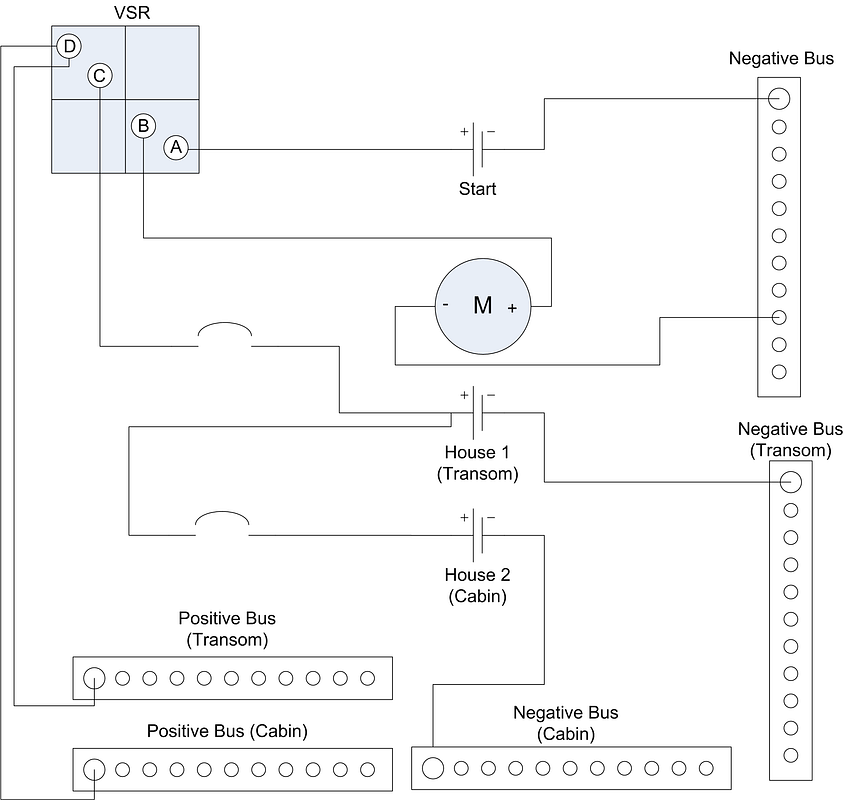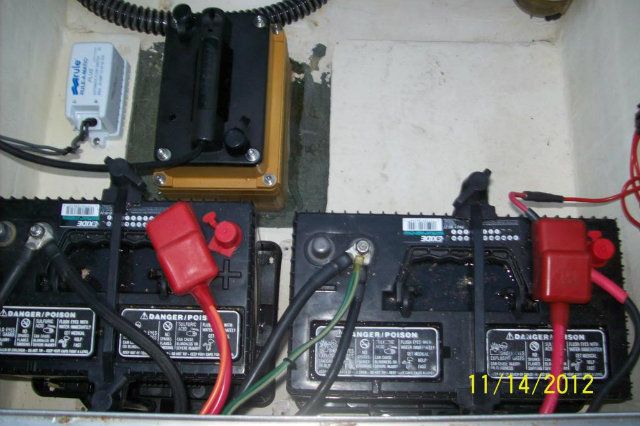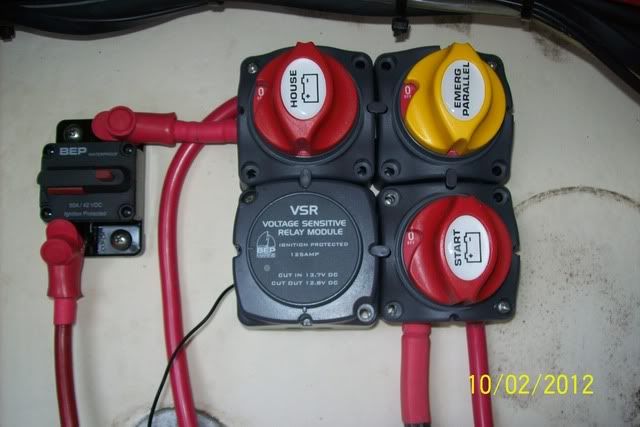I've definitely heard good things about those Lifeline batteries. If these don't last, then that's the route I'll probably go next.
By the way, I've spent a few days ripping things apart and figured I'd post an update on this project. Bottom line, EVERY panel I pull or wiring run I inspect, I'm finding stuff that makes me want to shudder. For example, check out this nifty wiring job for the cockpit lights and courtesy lights:
Yup, a male (automotive) spade connector, joined to a female (no heat shrink) and then a wire nut tying it into the run to the switch panel. Yikes!
So I pulled the hatches off the transom and removed the batteries. As it turns out, the House battery is a Group 31 and the starting battery is a Group 34 (go figure). I then got a bit carried away tracing wires and decided to just rip everything apart:
And then I decided to get crazy with some "Goo Gone" and a stiff brush, followed by Simple Green and a softer brush. You would not believe the amount of CRAP I found in the bilge once I could reach my arms down there. There were probably 5 or 6 pieces of cut-off wire ties stuck in the strainer of the bilge pump, plus a handful of screws and nuts.
Clean Bilge!:
I also discovered that the bilge pump was wired to a bus bar that was wired to the battery shut-off switches (doh!). In addition, I found that a negative lead for the Trim Tab pump (obviously not factory installed) was about 12' long and just dumped into the bilge. I marked it and pulled it out of the way, only to be able to see that my seacock was actually LOOSE. (I grabbed the live well pump on top of it and while trying to remove it the seacock turned instead!. With a couple of wrenches and some grunting and swearing, I managed to remove the livewell pump so I could get to the marelon seacock.
BTW - how tight should it be? I hand-tightened it since the boat is in a slip and I sure as hell didn't want to break it off while I was tightening it!
Next I pulled out the washdown hose which was flattened because of all the 90 degree turns it was making up to the strainer.
While tearing things apart, I found that the House batteries were actually crossing over to the starting battery.
Another Question:
When you have multiple battery banks (house and start) is it OK to have a single common ground throughout the boat or does each battery bank need to have its own ground system? Also, what gauge cable would should I use to connect the two house batteries together. I'd say the cable run will end up being about 15' for each cable.
Based on what I found today, I'm going to be completely re-thinking the way the batteries are hooked up.












































